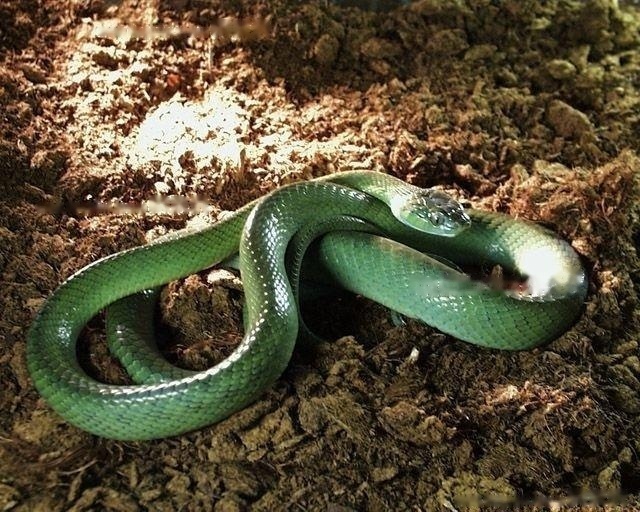I believe everyone knows the rattlesnake, the iron-headed snake, and the cobra, how venomous it is. One bite is fatal, so many people are afraid of snakes, and snakes are super flexible and fast. Fast, people can't avoid it, so there are very few people who keep it, but snakes are cold-blooded animals, and their bodies are cold in summer, so they should be very comfortable! The most important thing in keeping snakes is whether the snake is poisonous, so how to distinguish whether the snake is poisonous or not ?

We often say that snakes with triangular heads are highly poisonous and snakes with very bright skin. Indeed, there is a certain basis for this statement, but this The statement is rather one-sided. Although most venomous snakes have obvious triangular heads, there are many exceptions. Some venomous snakes are very poisonous, but their heads are not triangular; while the pseudo-pit viper among non-venomous snakes has a triangular head. The tails of the five-step snake, the belly snake and the cobra are indeed thick, but the tail of the iron head is slender; many brightly colored snakes, such as the jade-spotted brocade snake and the fire red chain snake, are not poisonous snakes, but the color of the pit viper Like dirt or shit, it's very unremarkable, but the toxicity is not to be underestimated. Therefore, to judge whether a snake is poisonous or not, it is not possible to make a fairly accurate judgment based on the shape of their head and the color of their skin, and further judgments should be made according to other methods.
1. Venom glands: Venomous snakes have venom glands, while non-venomous snakes do not. Venom glands evolved from salivary glands. Located on the sides of the head, behind the eyes, hidden in the jaw muscles, it can secrete venom. When a venomous snake bites an object, the muscles surrounding the venom gland contract, and the venom is injected into the body of the bitten object through the venom tube and the tube or groove of the fangs to cause poisoning. Non-venomous snakes do not have this function.
2. Venom tube: It is a conduit for conveying venom, connected between the venom gland and the fangs. Only venomous snakes have venom tubes.
3. Venomous fangs: Venomous snakes have fangs, which are located in front of or behind the non-venomous teeth in the maxilla, which are longer and larger than the non-venomous teeth.
So, which non-venomous snakes are easily confused with venomous snakes?
Several non-venomous snakes that are often mistaken for venomous snakes, due to their special appearance, bright color spots, and vicious temperament, Therefore, it is often regarded as a poisonous snake by some local people and panicked. In fact, this kind of snake is harmless to the human body when it bites. Such as tabby swimming snake (also called pheasant bozi snake), red chain snake (also called fire red chain) and so on.
The non-venomous snake yellow chain snake (also known as yellow red chain), which is easily confused with poisonous snakes in appearance or color spots, is often mistaken for the golden ring snake due to the black and yellow stripes on the back (details); The black-backed and white-ringed snake, because of the black and white stripes on the back of the snake, is also easily mistaken for the silver-ringed snake; the necked snake (also known as the pseudo-pit viper) has a thick body and a short tail, a tan back, and two lines. Thick dark brown patches with a slightly triangular head, very similar in shape to a pit viper or a viper; Cuiqing snake (also called Qingzhubiao) is often confused with Bamboo Leaf Green because of its green body.
Therefore, to judge whether a snake is poisonous or not, it can only make a rough judgment based on its appearance. Only with a deep understanding of snakes can we judge which kind of snake it is and whether it is poisonous or not based on their appearance. Therefore, if you are bitten, it is best to take emergency measures immediately and go to the hospital immediately. And remember clearly the appearance and characteristics of the snake, so that doctors and experts can judge whether the snake is venomous by description.
![[Dog Training 5] The training method of pet dog dining etiquette](/static/img/12192/12192_1.jpg)




